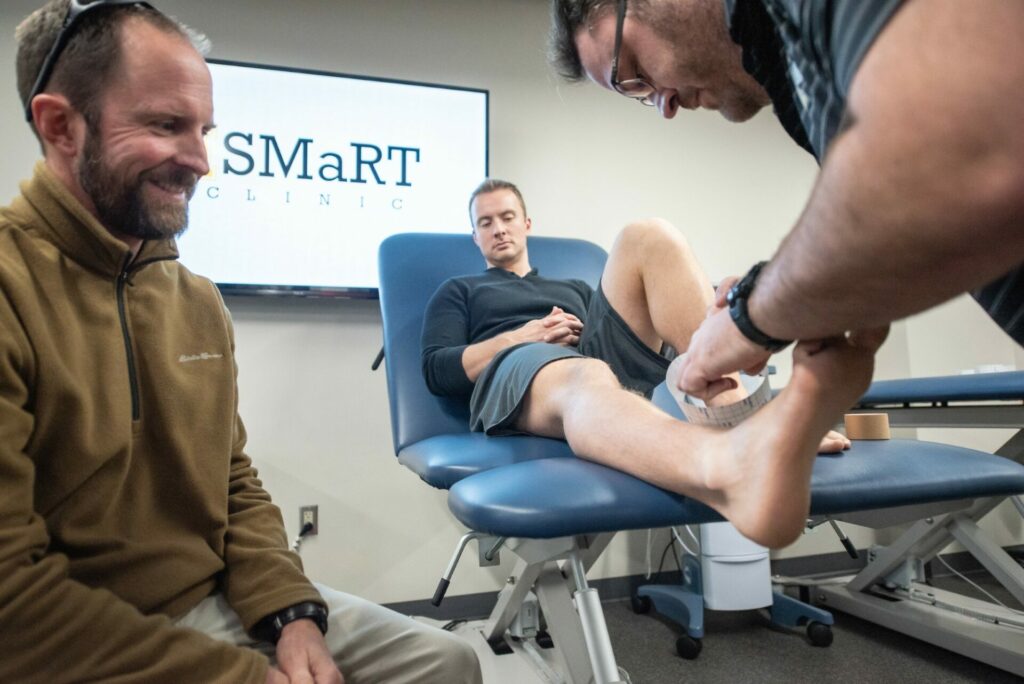For those of us in active populations, we all want to feel great and perform our best. However, it is very common for athletes and active individuals to experience pain and injury. While these create unfortunate experiences, there are a number of ways in which you can help prevent them before they ever happen!
What are common injuries?
In my experience, sprains, strains, and contusions are easily the “top 3” that I’ve encountered in my clinical practice. While these injuries appear to be simple, they can be experienced throughout various parts of the body to varying degrees of severity. Ankle sprains, “deep bruises,” and other injuries are very common occurrences that no patient should ever feel concerned about seeking treatment. Despite their frequency, finding ways to prevent sports injury is a very feasible goal to pursue. Sports injury prevention programs can be created by certified athletic trainers to do just that!
How can I prevent athletic injuries?
Sports injury prevention starts with a simple question – “How can I help prevent ___ injury from happening?” For the average person, knowing how and where to start a sports injury prevention program may be confusing. An excellent first step would be contacting your team’s certified athletic trainer! Injury prevention and wellness promotion are key components of an athletic trainer’s education and qualification. They see, evaluate, and treat athletic and active patients on a daily basis which makes them keenly aware of the “ins and outs” of sports injuries.
When should I seek help to prevent sports injuries?
Quite honestly, athletes and active individuals can start their injury prevention programs at any point in time! However, injury prevention programs may be most easily implemented in the off seasons and then maintained throughout an athlete “in season” period of time. Just as an athlete would start a training, weightlifting, and conditioning program when they aren’t in competition, these same athletes can implement an injury prevention program in that same timeframe. By incorporating the program earlier on in one’s training, they likely improve their chances of reducing the risk of sustaining a preventable major injury later on in the season.
Who should I see to start an injury prevention program?
Looking at the entire sports medicine team, athletic trainers are an excellent person to reach out to first. As it was mentioned earlier, these health care professionals are well trained and equipped to implement evidence-based injury prevention strategies for active populations.
Each of these injury prevention strategies for athletes and active populations can take shape in many different ways.
Sport Specific Injury Prevention Programs
Certain sports and populations often sustain particularly common injuries. Athletic trainers can help prevent athletic injuries by designing a program that is tailored to the needs and demands that a team or particular sport experiences. For example, are you playing soccer? Then your athletic trainer may help create an injury prevention program focused on training and strengthening your lower extremities to handle the extended demands of your sport.
Position Specific Injury Prevention Programs
American football is a prime example of how a single sport can have many different types of common injuries. Take a moment and think about what injuries are most common for an NFL team. It may be easy to come up with a few but it really depends on more factors than which sport an athlete is participating in. A football team is made up of many different sub-groups of athletes with different demands and needs. The injuries commonly experienced by linemen often vary in nature when compared to common injuries for “skill positions” like wide receivers and quarterbacks.
Injury Specific Prevention Programs
Have you ever suffered an ACL sprain or rupture? Do you want to prevent that from ever happening (or happening again)? Athletic trainers are well trained and educated in recognizing the contributing factors to an ACL sprain/rupture. With this training, athletic trainers can design injury prevention strategies for athletes specific to these factors and concerns.
Individualized Injury Prevention Programs
Looking at your overall wellness, athletic trainers are often aware of key signs and conditions that may pre-dispose an athlete or active person to particular kinds of injuries. After completing a thorough evaluation, athletic trainers can tailor a sports injury prevention program to the specific needs of an individual.
Don’t allow the conversation to stop there, though! Preventing athletic injuries and illnesses is best done in a teamed approach. Incorporating team physicians, physical therapists, strength and conditioning coaches, and trained diet & nutrition experts (just to name a few) can help provide insight and direction on whole-athlete wellness.
Is it ever too late to start a sports injury prevention program?
The short answer is NO! Even if you’ve sustained an injury already, the number one predictor of future injury is having a previous history of injuries. Whether you’re already injured or are wanting to prevent a sports injury in the future, take the opportunity to speak with your athletic trainer now!
The injury prevention process can be tough to navigate at times. If you’re interested in a career in helping prevent sports injuries, athletic training is an excellent place to start! Here at the University of Idaho, our athletic training programs uniquely prepare you to start your career in Sports Medicine and help contribute to solving complex solutions in the health care world! If you’re interested in a career in sports medicine, reach out and let us know! We’d love to chat with you!
